The entire universe, the Earth we live on and all living and inanimate entities are made up of various combinations of elements. Although the atoms that comprise the elements are all made up of the same particles, they possess exceedingly diverse characteristics. What essentially makes the elements different from one another is their atomic numbers—in short, the number of protons in their nuclei. There is one proton in hydrogen, the lightest element, 2 in helium, the next lightest, 79 in gold, 8 in an oxygen atom and 26 in iron. The property that differentiates gold from iron, or iron from oxygen is merely the number of protons in their respective atoms. The air we breathe, the human body, any plant or animal or planet in space, living or inanimate, sweet or sour, solid or liquid: absolutely everything is made up of protons, neutrons and electrons within Allah's Sublime Creation. (For details see The Miracle of the Atom [Ta-Ha Publishers Ltd])
"Hadid"—one of the Surahs in the Qur'an – literally means "iron," one of the elements. Other elements and their atomic numbers and masses are also indicated in this Surah. (Allah knows the truth.) To put it another way, Surat al-Hadid contains information about the atoms which constitute the very matter that makes up the universe. The provision of this information, at a time when the elements and their atomic numbers had not been discovered, is yet another spectacular miracle of the Qur'an.
The sequence of the Arabic letters in Surat al-Hadid represent expressions containing our Lord's Commands—and it also carried pertinent scientific advice on the one hand and references concerning atoms on the other.
This study was conducted taking the Arabic letter "Ra" as the "R" in Western alphabets or "Mim" as the letter "M." The sequence of the letters representing the element is not considered. It is sufficient for the letters to appear side by side. This is because the letters in the element Kr, for example, do not represent another element by the name of "Rk."
Periodic Table | |
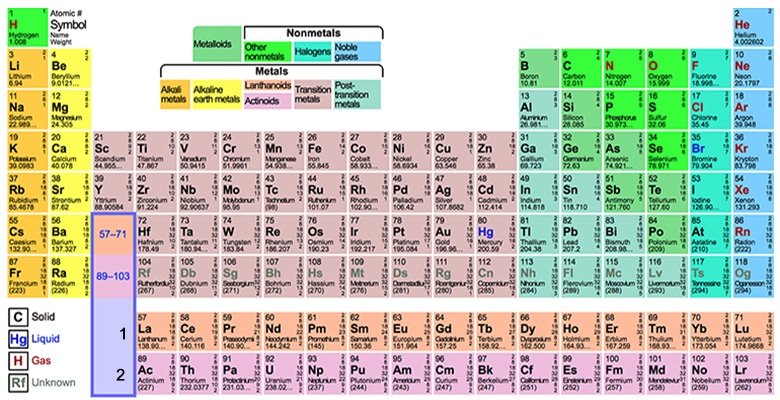 | |
1. Lanthanoids | 2. Actinods |
| Scientists have identified 92 natural elements. Artificial elements have also been obtained by various experiments in recent times, but these are seldom found on Earth. To date, the existence of 110 elements has been verified by the International Union of Pure and Applied Chemistry (IUPAC). | |
(This section is based on Ömer Çelakıl's book "Building Blocks of the Universe in the Holy Qur'an" and contains calculations the accuracy of which has been confirmed.)
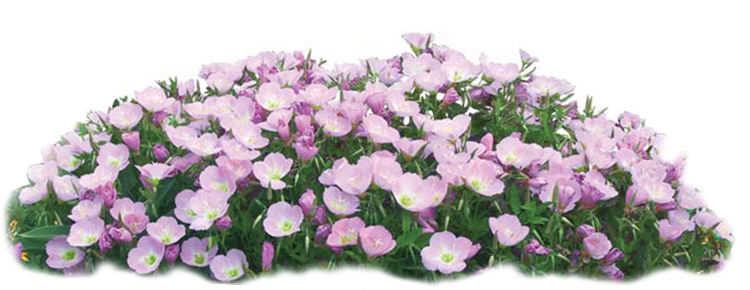 |
 | The element Radon (Rn) was discovered by the German chemist Friedrich E. Dorn in 1900, hundreds of years after the revelation of the Qur'an. The element is rarely found in nature. Radon is radioactive element and used in medical treatments.
|
 | Zirconium (Zr) was discovered by the German chemist Martin Heinrich Klaproth in 1789. Of course, nobody in 7th Century Arabia would have known about Klaproth or Zirconium or its scientific make-up. Therefore, a Qur’anic reference to this element, used in the cores of nuclear reactors, hundreds of years beforehand, is certainly a considerable miracle. There are 40 letters between the first time that the letters "Z" and "R" appear together and the beginning of the verse. The atomic number of Zirconium, chemical symbol Zr, is 40. There are also 91 letters between the first time the letters "Z" and "R" come together and the end of the actual verse – and remarkably, that number is the atomic weight of Zirconium.
|
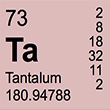 | The element Tantalum (Ta) was discovered by the Swedish chemist Anders Ekeberg in 1802. It is a very tough, durable element with a very high melting point. It is therefore used in such areas as electrics and electronics as it can withstand a great deal of heat. In addition, since this element does not react with bodily fluids, it is also employed regular in many famous medicines. This element, discovered centuries after the revelation of the Qur'an, is one of the rarest in nature. There are 73 letters from the beginning of the verse to the first time the letters "T" and "A" appear together—and quite amazingly, that figure is the atomic number of Tantalum.
|
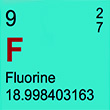 | The element Fluorine (F) was discovered by the French chemist Henri Moissan in 1886. There are 9 letters between the beginning of the verse and the first appearance of the letter "F" in Surat al-Hadid.
|
 | Oxygen is one of the most common elements on Earth. It was officially discovered in 1770 by two scientists, working separately: the Swiss Carl Scheele and the Brit, Joseph Priestley. There are 8 letters from the beginning of the verse to the first letter "O" in Surat al-Hadid. "O" is represented by the letter Alif in Arabic. The symbol of Oxygen is "O" and its atomic number 8.
|
 | The French scientist Paul Lecoq de Boisbaudran discovered the element Samarium (Sm) in 1879. In the Surah the letters "S" and "M" first come together after the 62nd letter. These letters appear together as "M" and "S." But there is no element bearing the abbreviation Ms, the reverse of Sm.
|
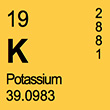 | The British chemist Sir Humphrey Davy first obtained the element Potassium (K) using electrolysis in 1807. Potassium is a requirement for plants, animals and also the human body. It can be found quite easily as it is commonly found in the world of nature. It also has a wide field of application, from the making of explosives to the production of medicine. There are 39 letters between the beginning of Surat al-Hadid and the first appearance of the letter "K," that figure being the element's atomic mass. In addition there are 19 letters between the beginning of the verse and here. It is also noteworthy that this is the atomic number of the element K.
|
 | The element Sulfur (S) is found in high levels in the bodies of living things and can also be found in abundance in soil. There are 32 letters in Surat al-Hadid up to the first letter "S". That figure is also the atomic mass of the element Sulfur.
◉ The conjunction "and" is not included in the calculation. |
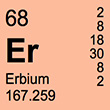 | The element Erbium (Er) was discovered by the Swedish chemist Carl Gustaf Mosander in 1843. The letters "E" and "R" first appear together 167 letters after the beginning of the verse. Erbium has an atomic mass of 167.
|
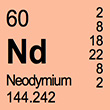 | The Australian scientist Carl F. Auer von Welsbach succeeded in obtaining the element Neodymium (Nd) in 1885. There are 60 letters between the first time the letters "N" and "D" appear together in Surat al-Hadid and the end of the verse. This figure is the atomic number of the element Nd.
|
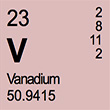 | The element Vanadium (V) was discovered in 1801 by the Mexican scientist Andres Manuel del Rio and by the Swedish chemist Nils Gabriel Sefstrom in 1830. Vanadium is one of the fundamental elements in the body. There are 23 letters to the end of the verse from the letter V. This figure represents the atomic number of Vanadium.
|
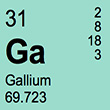 | The French chemist Paul Emile Lecoq de Boisbaudran discovered the element Gallium (Ga) in 1875 using spectral bands. Gallium is used in such spheres as electronics and once again, in the production of medicine. There are 69 letters to the end of the verse from the point at which the letters "G" and "A" appear together in Surat al-Hadid. This number – 69 - is also the atomic number of Gallium.
|
 | Nitrogen (N), discovered by the Scottish scientist Daniel Rutherford in 1772, makes up 78% of the atmosphere. It is also present in the Sun and various stars in the universe. Nitrogen occupies an important place in the structures of living things and is found in such vital components as protein and nucleic acid. There are 14 letters from the letter "N" in Surat al-Hadid to the end of the verse. 14 is also the atomic number of Nitrogen. There are 7 letters between the second and third letters "N" – it is worthy of note that this is also the atomic number of Nitrogen.
|
 | Bismuth (Bi) is one of the elements referred to in the Qur'an hundreds of years ago. (Allah knows the truth.) A rare element, Bismuth is used in a wide range of fields, from medicine to nuclear reactors and from cosmetics to electric circuits. In Surat al-Hadid, there are 83 letters between the points where the letters "B" and "I" appear together.
|
 | Chromium (Cr) was discovered in 1797 by Louis-Nicolas Vauquelin. There are a total of 24 words between the first and second appearances, consecutively, of the letter C and R in Surat al-Hadid. Therefore, it is noteworthy that the atomic number of Chromium is 24.
|
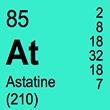 | The element Astatine (At) was discovered by three scientists in 1940. As with other elements, its atomic number appearing in the Surah is one of the miracles of the Qur'an. There are 85 letters between the second and third appearances side by side of the letters A and T, which represent Astatine. This figure is at the same time the atomic number of Astatine.
|
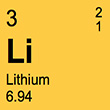 | The Swedish chemist Johan August Arfwedson discovered the element Lithium (Li) in 1817. This element represents some 0.002% of the Earth's crust. Lithium is required by many industrial companies and is also used in a wide range of other fields - such as manufacturing batteries, freezers and artificial rubber and also in the production of medicine. Interestingly, there are 6 words between the first time the letters "L" and "I" appear side by side in Surat al-Hadid and the beginning of the verse. This figure - 6 - is also the atomic number of Lithium.
|
 | The Dutch physicist Dirk Coster and the Hungarian chemist Georg de Hevesy discovered the element Hafnium (Hf) in 1923. Particular use is made of it in nuclear reactors. The element is also found in the Sun's atmosphere. There are 178 words between the beginning of Surat al-Hadid and where the letters "H" and "F" appear consecutively. Hafnium's atomic mass is 178.
◉ The conjunction "and" was not included in the calculation.
|
 | The element Indium (In) was first discovered in 1863 by the scientists Hieronymus Theodor Richter and Ferdinand Reich. Discovered hundreds of years after the revelation of the Qur'an, Indium is found in very small quantities in nature. There are 114 words from the beginning of Surat al-Hadid to where the letters "I" and "N" appear side by side. This figure is also the atomic mass of Indium.
◉ The conjunction "and" was not included in the calculation. |
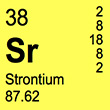 | Non-radioactive Strontium was first discovered in Scotland in 1790 by Adair Crawford and William Cruikshank. There are 87 words between the beginning of Surat al-Hadid and where the letters "S" and "R" appear together. 87 is the atomic mass of Strontium.
◉ The conjunction "and" was not included in the calculation. |
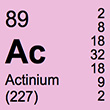 | Discovered in 1899 by the French scientist Andre Debierne, Actinium (Ac) is a rare, radioactive element. This element, which emits blue rays in the dark, is a glowing white-silver in color. There are 89 words from the beginning of Surat al-Hadid to the first time the letters "A" and "C" appear together. That figure is also the atomic number of the element Actinium.
◉ The conjunction "and" was not included in the calculation. |
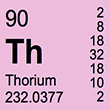 | Thorium (Th) is a radioactive element discovered in 1828 by the Swedish chemist Jons Jacob Berzelius. It is used as a source of energy in nuclear devices. The atomic number of the element Thorium is 90. There are 90 words between the beginning of Surat al-Hadid and the first time the letters "T" and "H" appear side by side. This may also be too strong a link to be a mere coincidence.
◉ The conjunction "and" was not included in the calculation. |
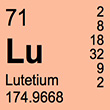 | Lutetium (Lu) was discovered in 1907 by Auer von Welsbach and Georges Urbain. There are 71 words from the beginning of Surat al-Hadid to the letters L and U that represent the element. The atomic number of Lutetium (Lu) is also 71.
◉ The conjunction "and" was not included in the calculation. |
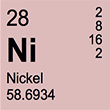 | The element pure nickel (Ni) was first isolated in 1751 by the Swedish scientist Axel Fredrik Cronstedt. Harder than iron, nickel is best-known for being incredibly resistant to rust and decay. Nickel is used in many fields, from high-resistance industrial equipment to metal coins. There are 58 letters between the first time the letters "N" an "I" appear in Surat al-Hadid and the end of the verse. That figure is also the atomic mass of Nickel.
◉ The conjunction "and" was not included in the calculation. |
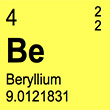 | Beryllium (Be) was discovered by Louis-Nicolas Vauquelin in 1798. This element, which is actually very rare in nature, is used in nuclear devices, rockets and space vehicles. There are 9 words between where the letters "B" and "E" appear together and the end of the verse, and that figure also constitutes the atomic mass of Beryllium.
◉ The conjunction "and" was not included in the calculation. |
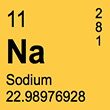 | Humphry Davy discovered the element Sodium (Na) in 1807, using electrolysis. Sodium atoms are found in a great many objects - from the salt we eat to the stars in space. The sodium atoms in the cells in the human body perform a vital function. The presence of a certain amount of sodium in the human body is essential for a normal flow of water between cells and bodily fluids, tissue formation and muscle contraction. There are 11 words between the point where the letters "N" and "A" occur together in Surat al-Hadid and the end of the verse. That figure is identical to Sodium's atomic number.
◉ The conjunction "and" was not included in the calculation. |
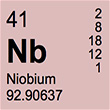 | The element niobium (Nb) was discovered by the British chemist Charles Hatchett in 1801. This element, which is not found abundantly in nature by any means, is greatly sought-after. It is used in nuclear reactors and materials resistant to high wavelength radiation. The number of words between the places in Surat al-Hadid where the letters “N” and “B” occur together is also that of Niobium's atomic number – 41.
◉ The conjunction "and" was not included in the calculation.
|
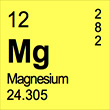 | The element Magnesium (Mg) was discovered by the British chemist Sir Humphry Davy. Magnesium, discovered centuries after the revelation of the Qur'an, is one of the most common elements in the Earth's crust. It appears in many places, from sea water to the human body. It is an element of vital importance to living things. There are 12 words between the places in Surat al-Hadid where the letter Mg appear together. That figure—12—is also the atomic number of Magnesium.
◉ The conjunction "and" was not included in the calculation. |
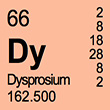 | Dysprosium (Dy) was discovered in 1886 by the French scientist Paul Emile Lecoq de Boisbaudran. Its atomic mass is 162. The number of words between the places in Surat al-Hadid where the letters "Dy" appear together is also 162.
◉ The conjunction "and" was not included in the calculation. |
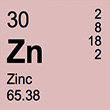 | The metal Zinc (Zn) appears in many structures—from the Earth's crust to the living creatures which inhabit our planet. For example, it performs vitally important functions by serving in enzymes and blood cells in the human body. There are 65 words between the places in Surat al-Hadid where the letters Zn appear together. The atomic mass of Zinc is also 65.
◉ The conjunction "and" was not included in the calculation. |
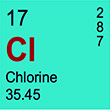 | The Swedish scientist Carl Wilhelm Scheele first obtained the element Chlorine (Cl) in 1774, some twelve centuries after the Qur’anic revelation. Chlorine is most used in killing bacteria in drinking water and in swimming pools – it is known for its distinct chemical smell. Chlorine is used in a wide range of fields, from drug manufacture to paints - and from petrol products to cleaning products. There are 35 words between the first and last time the letters "C" and "L" appear together. That figure is also the atomic mass of Chlorine.
◉ The conjunction "and" was not included in the calculation. |
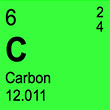 | Carbon (C) occupies an extremely important place in the structure of living things and exists in a wide range of substances in the world of nature. Carbon atoms are present in very different compounds, from the carbon dioxide released during respiration to the most precious diamonds. There are 12 words between the first and last letters "C" in Surat al-Hadid. That figure also corresponds to the atomic mass of Carbon.
◉ The conjunction "and" was not included in the calculation. |
 | Cerium (Ce) was discovered in 1803 by the geologist Wilhelm von Hisinger and chemist Jons Berzelius, both from Sweden — and independently of them, by the German chemist Martin Klaproth. There are 140 words between the first and last occurrences, side by side, of the letters "C" and "E" in Surat al-Hadid. 140 is also the atomic mass of the element Cerium.
◉ The conjunction "and" was not included in the calculation. |
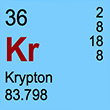 | The element Krypton (Kr) was discovered by the British chemists Morris W. Travers and Sir William Ramsay in 1898. There are 83 words between the first and last occurrences, side by side, of the letters "K" and "R" in Surat al-Hadid.
◉ The conjunction "and" was not included in the calculation.
|